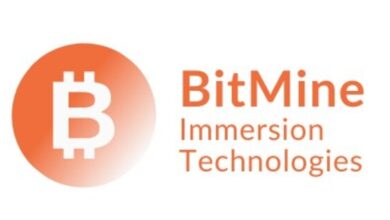QAN Releases eBook Detailing Energy Efficient Blockchain Protocol

QAN, the quantum-resistant blockchain platform, has released a clarifying and helpful ebook describing their Proof-of-Randomness (PoR) protocol. Designed to mitigate the massive energy consumption of Bitcoin and Ethereum, while maintaining the security that Proof-of-Work (PoW) provides, this new protocol will certainly present a new and helpful way for block validation to move forward at a scalable and energy-efficient level.
QAN, the quantum-resistant blockchain platform, has released a clarifying and helpful ebook describing their Proof-of-Randomness (PoR) protocol. Designed to mitigate the massive energy consumption of Bitcoin and Ethereum, while maintaining the security that Proof-of-Work (PoW) provides, this new protocol will certainly present a new and helpful way for block validation to move forward at a scalable and energy-efficient level.
“The new transparent technology must not waste our precious environmental resources. PoW, known as mining consumes a tremendous amount of energy. The other solution, Proof-of-Stake (PoS), while not using significant energy, is not democratic. We went for an all-new consensus algorithm, Proof-of-Randomness (PoR), which consumes a hundred times less energy and yet remains democratic,” – says Johann Polecsak – CTO at QAN blockchain platform.
Bitcoin, and the blockchain technology that gave it life have long been considered a revolutionary concept. However, the massive cost of validating blocks on the Bitcoin network has made the cryptocurrency very inefficient. The introduction of Ethereum by Vitalik Buterin certainly made some strides towards change. In particular, the movement away from simple currency usage toward smart contracts and the like has created a whole new blockchain-based industrial juggernaut.
However, as with Bitcoin, Ethereum also runs on a Proof-of-Work (PoW) validation protocol. While it uses less energy it is still untenable in a green-conscious world. And while Vitalik Buterin has promised that the new proof of stake validation method on the Casper protocol will be far less energy consumptive, the problem of scalability and transactions per second remains.
QAN blockchain platform provides a helpful solution that is spelled out in detail in the newly released 39-pages ebook. Based on a similar concept as both previous iterations, QAN has created a more robust and certain validation method called Proof-of-Randomness (PoR). Designed by some of the best in the industry, this validation method creates a random block generation sequence. When any block is validated, the validator is moved back into the line, to await their random selection.
All validators have an equal opportunity to validate a block at any given point, based on a deposit paid. By moving the validation process away from mathematical equations and toward random choice, QAN has effectively eliminated the need for massive electrical usage in solving complex equations to mine blocks on blockchain networks.
Two benefits are immediately apparent. Energy consumption can be mitigated almost entirely, compared with Proof-of-Work (PoW) models. Second, the important benefit of scalability is almost immediately granted. When blocks are validated by randomness, the time to select the next random validator is all that is needed to generate the next block. This makes transactions per second (TPS) higher by a magnitude.
According to QAN co-founder and CTO, Johann Polecsak, this system is the most environmentally and fiscally responsible solution for blockchain available while being democratic. He said, “It is important to create and participate in technologies that lessen the burden on the earth and its resources.”





